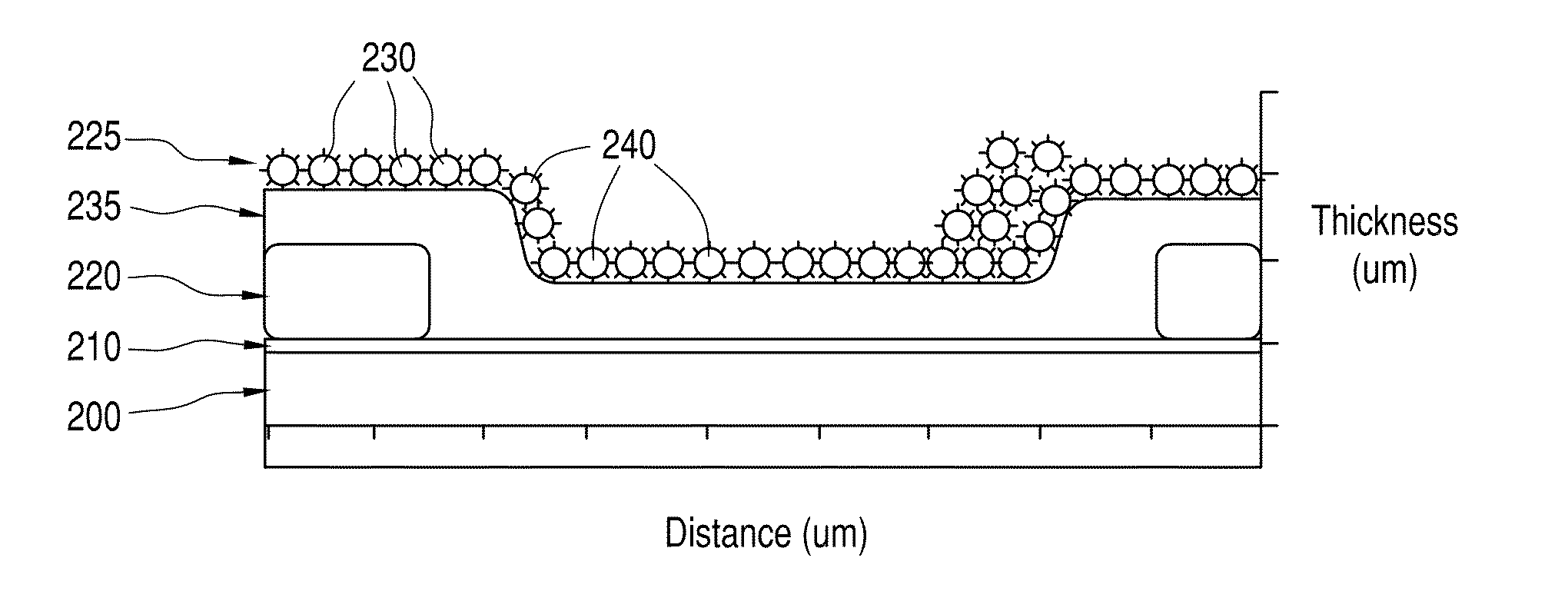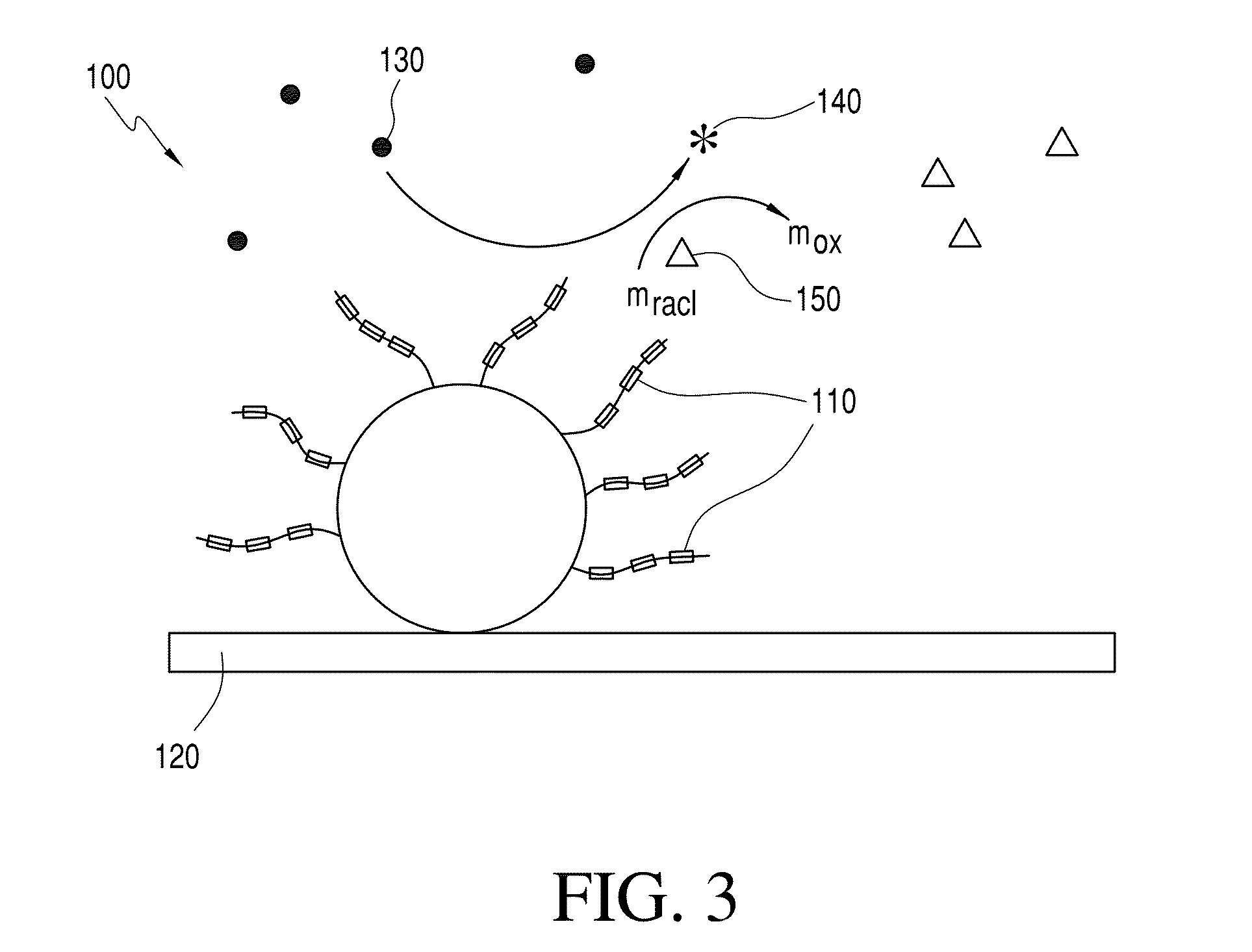Biosensor with improved interference characteristics
a biosensor and interference characteristic technology, applied in the field of biosensors with improved interference characteristics, can solve the problems of several enzymes not being able to utilize mediators, poor sensor stability, and higher background and interference problems, and achieve the effect of reducing the the reduction rate of electron redox mediating molecules
- Summary
- Abstract
- Description
- Claims
- Application Information
AI Technical Summary
Benefits of technology
Problems solved by technology
Method used
Image
Examples
example 1
Design and Expression of Recombinant Wild-Type Sarcosine Oxidase
[0124]Using a wild-type protein sequence from Bacillus spp. B-0618 sarcosine oxidase (UniProt database accession P40859), the protein sequence was reverse translated back to DNA SEQ ID NO:1 using high expression codons found for Escherichia coli (www.kazusa.or.jp). An EcoRI adaptor site was added to the 5′-end, and a HindIII adaptor site was added to the 3′-end of the gene. The adaptor sequences generate an in-frame fusion in a pET28b+ vector, fusing the hexahistidine tag (SEQ ID NO: 34) found in the vector. The pET28b+ vector was cleaved with EcoRI / HindIII and dephosphorylated. The gene sequence with adaptors was synthesized by GenScript (860 Centennial Ave., Piscataway, N.J., 08854, USA) and cloned into the pET28b+ vector using T4 DNA Ligase, followed by transformation into an E. coli host organism. The construct is provided as a DNA construct which is transformed into BL21(DE3) E. coli host on 2×YT plates containing ...
example 2
Sarcosine Oxidase (SOX) Mutagenesis
[0126]Using the Recombinant Sarcosine Oxidase clone from Example 1 as the starting material, four site specific mutations were generated. The mutations were generated using synthetic mutagenic primers SEQ ID NOS: 2 to 6 with a slight modification of the Thermo Scientific Phusion Site-Directed Mutagenesis Kit (F-541). Essentially SEQ ID NOS: 2 to 5 comprising mutagenic primers were paired with the reverse primer SEQ ID NO: 6. The high fidelity Phusion Hot Start II DNA Polymerase was used to generate a mutagenized amplicon having 5′-phosphorylated ends. The kit was modified by using NEB T4 DNA ligase and performing the ligation reaction overnight at 16° C., instead of the kits rapid ligation reagents and protocol. The ligated material was then transformed into the BL21(DE3) cells. The mutants were confirmed by sequencing or restriction fragment length polymorphism (PstI with the Glutamine mutation). The cells were then grown in flasks with 2×YT broth...
example 3
Engineered SOX-Mediator Experiment
[0127]A commercially available 65 KDa SOX (Toyobo), a recombinant clone of wild type 48 KDa SOX (from Example 1) as well as 4 other single point mutation clones of the 48 KDa SOX (from Example 2) were tested for their ability to transfer electrons to an Osmium redox mediator. The 4 clones (see FIG. 14) of SOX were designated as SOXFM1-3, SOXFQ1-3, SOXFR1-x and SOXFA1-4. These mutations were designed to prevent the clone from interacting with the Flavin Adenine Dinucleotide (FAD) responsible for the transfer of electrons to oxygen. The SOX clone would however be able to extract electrons from the Sarcosine substrate as the FAD cofactor that receives the electrons (substrate FAD) is still present in the clones. Because the clones are unable to efficiently transfer electrons to oxygen, the FAD cofactor is expected to stay in a reduced state for a prolonged period thereby allowing time for the mediator to pick up electrons from the reduced form of the e...
PUM
| Property | Measurement | Unit |
|---|---|---|
| Interference | aaaaa | aaaaa |
| Concentration | aaaaa | aaaaa |
| Structure | aaaaa | aaaaa |
Abstract
Description
Claims
Application Information
 Login to View More
Login to View More - R&D
- Intellectual Property
- Life Sciences
- Materials
- Tech Scout
- Unparalleled Data Quality
- Higher Quality Content
- 60% Fewer Hallucinations
Browse by: Latest US Patents, China's latest patents, Technical Efficacy Thesaurus, Application Domain, Technology Topic, Popular Technical Reports.
© 2025 PatSnap. All rights reserved.Legal|Privacy policy|Modern Slavery Act Transparency Statement|Sitemap|About US| Contact US: help@patsnap.com



